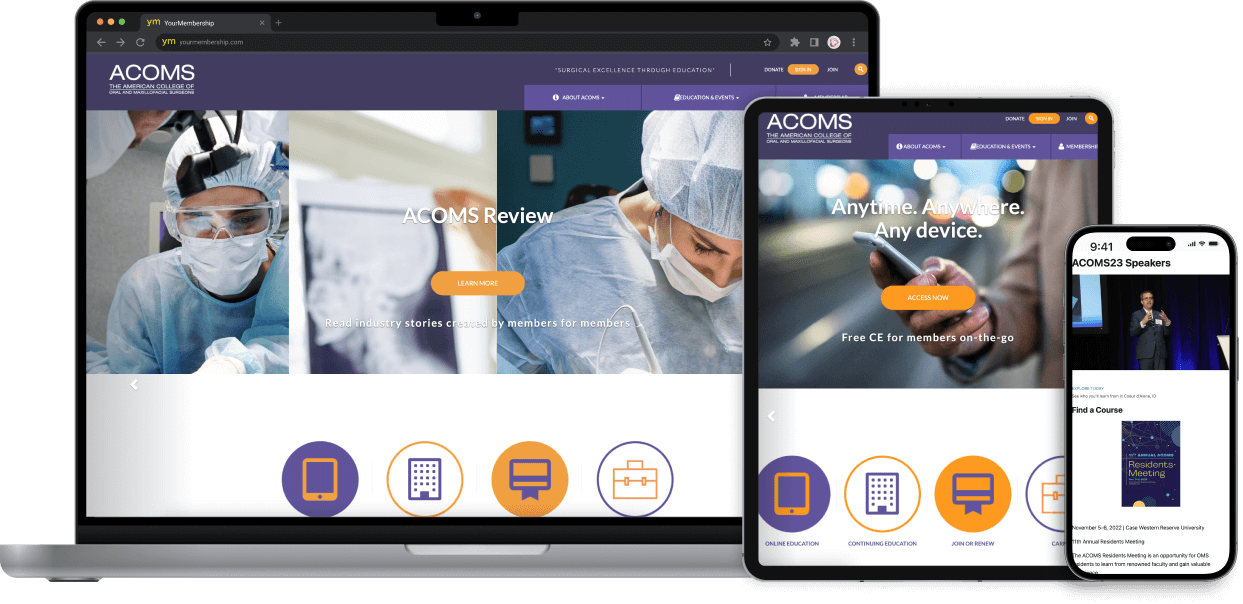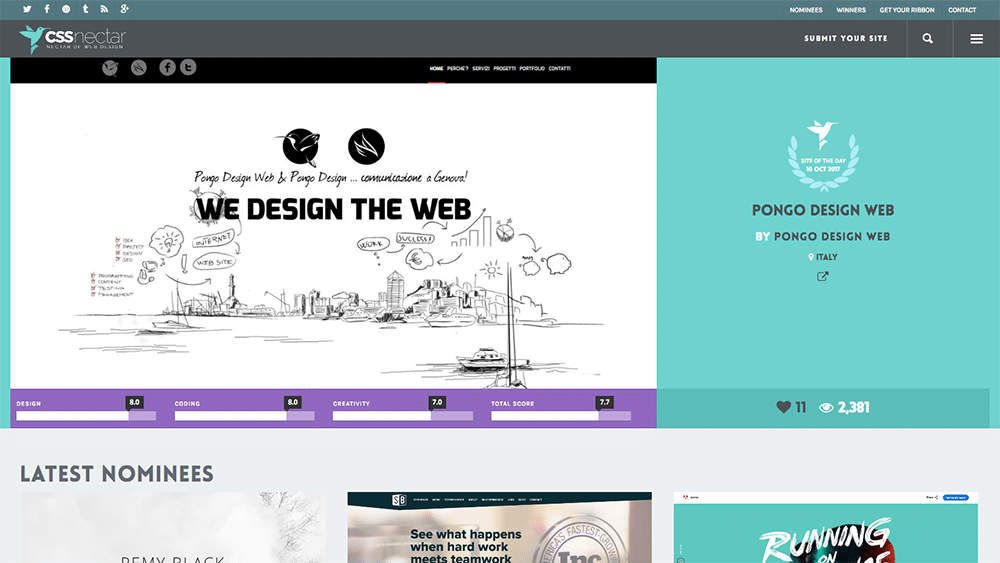Modern Web Site Style That Catches Interest and Converts
In an increasingly electronic landscape, modern web site design has actually become a critical aspect in capturing customer interest and driving conversions. By tactically utilizing visual power structure, responsive formats, and engaging interactive components, developers can create experiences that not just bring in site visitors however additionally assist in meaningful interactions. Effective call-to-action techniques play an essential function in guiding individuals toward wanted outcomes. As we check out these vital elements, it comes to be clear that understanding their interaction can significantly affect a site's performance and individual contentment. What are the vital aspects that absolutely make a difference?
Importance of Visual Hierarchy
Aesthetic pecking order is a vital element in site design, as it overviews users' interest and enhances their general experience. By purposefully arranging content, designers can direct customers to the most essential details first, consequently enhancing engagement and boosting usability.
Integrating a rational flow in material arrangement is essential; as an example, putting one of the most critical info at the top of a web page fosters instant acknowledgment. Consistent use of typography, such as varying font dimensions and designs, assists develop a clear web content structure. This organization not just aids in navigation however also constructs count on, as individuals really feel a lot more comfortable when they can conveniently find what they are trying to find.
Inevitably, a well-executed aesthetic hierarchy not only improves visual appeal yet likewise dramatically impacts user actions. By prioritizing crucial elements and guaranteeing a smooth experience, designers can efficiently convert visitors into consumers, strengthening the value of this foundational style principle in contemporary internet site growth.
Responsive Layout for All Instruments
Developing a smooth experience throughout numerous gadgets is necessary in today's digital landscape, where customers gain access to web sites from tablet computers, smart devices, and desktop computers alike. Receptive style is a crucial approach that ensures web sites adjust fluidly to different screen positionings, dimensions, and resolutions. By using versatile grids, pictures, and CSS media queries, developers can produce layouts that maintain visual integrity and performance, no matter of the device being utilized.
The significance of receptive layout expands beyond appearances; it directly affects customer engagement and conversion rates. A web site that operates well on all devices encourages longer visits and lowers bounce rates, as individuals are most likely to engage with material that is easy to navigate. In addition, online search engine, specifically Google, prioritize mobile-friendly sites in their positions, making receptive design an essential part of seo (SEO)
Including responsive style not just enhances user experience however also streamlines the development procedure. By developing a single website that works across tools, businesses can save time and resources contrasted to establishing different mobile and desktop versions. Ultimately, responsive design is a basic technique for modern internet site style, guaranteeing ease of access and complete satisfaction for all customers, no matter their gadget.
Involving Interactive Elements
While a receptive style prepares for a practical site, integrating interesting interactive elements is important for capturing individual interest and cultivating deeper connections. Website Design. Interactive elements, such as computer animations, quizzes, and clickable infographics, develop a more vibrant customer experience, motivating visitors to invest even more time on the site
Incorporating interactive attributes can also lead individuals with complex info, making it much easier to digest material. For instance, interactive sliders can highlight item variations, while ingrained videos can supply demonstrations or testimonies that resonate greater than static pictures or message. Gamification methods, like benefits for completing jobs or engaging with web content, can enhance user motivation and retention.
Effective usage of interactive elements not just improves the customer experience but can likewise lead to greater conversion rates. It is necessary to balance interactivity with efficiency; overly complicated attributes may prevent site rate, negatively affecting individual satisfaction.
Streamlined Navigation Practices
Reliable navigating is a foundation of any kind of successful web site, as it straight influences customer experience and content accessibility. Streamlined navigation techniques ensure that users can quickly locate information, enhancing their communication with the site. A well-structured navigation menu need to be simple and user-friendly, normally including a limited number of key categories to stay clear of frustrating site visitors.
To accomplish structured navigating, developers must focus on an ordered framework that realistically organizes content. Implementing breadcrumb routes here are the findings can provide users with context concerning their current location within the site, enabling smooth backtracking. Additionally, making use of drop-down menus can properly preserve room while still supplying access to subcategories.
Responsive style is crucial, as navigating must be useful across all devices (Website Design). Mobile users, particularly, advantage from touch-friendly food selections and retractable sections that maintain functionality without compromising looks

Reliable Call-to-Action Strategies
A Get More Information well-crafted call-to-action (CTA) is essential for assisting customers toward preferred end results on a site, as it encourages them to engage with material or make an acquisition. To optimize their effectiveness, CTAs should be clear, engaging, and tactically placed throughout the site.
First, make use of action-oriented language that connects necessity or worth, such as "Start," "Join Now," or "Claim Your Discount." This language not only motivates individuals however likewise establishes clear expectations about the next actions.
2nd, consider design elements; CTAs ought to stand out aesthetically through contrasting shades, ample whitespace, and famous positioning. A switch that is simple to see and click increases the likelihood of user communication.
Furthermore, individualizing CTAs based upon customer habits or demographics can considerably improve engagement. Tailored messages reverberate much more with individuals, driving higher conversion prices.

Final Thought
In final thought, contemporary site layout emphasizes the combination of visual power structure, responsive layouts, engaging interactive aspects, streamlined navigating, and efficient call-to-action approaches. These parts collectively enhance user experience, guaranteeing that visitors continue to be engaged and motivated to explore check my site content further. By prioritizing these layout concepts, services can significantly boost customer retention and conversion prices, eventually causing better success in the digital landscape. The constant development of website design highlights its important duty in effective online interaction and marketing.
In an increasingly electronic landscape, contemporary web site design has actually arised as a pivotal factor in capturing individual interest and driving conversions.Visual power structure is an essential component in internet site design, as it overviews users' interest and improves their overall experience.The relevance of receptive style prolongs beyond aesthetics; it straight affects individual engagement and conversion rates.Integrating responsive layout not only improves customer experience but additionally streamlines the development process. Eventually, responsive style is a fundamental approach for modern internet site design, guaranteeing availability and fulfillment for all individuals, no matter of their device.